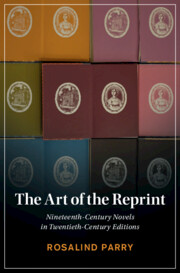Book contents
- The Art of the Reprint
- Cambridge Studies in Nineteenth-Century Literature and Culture
- The Art of the Reprint
- Copyright page
- Dedication
- Contents
- Figures
- Acknowledgments
- Introduction
- Chapter 1 Clare Leighton & Thomas Hardy’s The Return of the Native
- Chapter 2 Rockwell Kent & Herman Melville’s Moby Dick
- Chapter 3 Fritz Eichenberg & Charlotte Brontë’s Jane Eyre
- Chapter 4 Joan Hassall & The Complete Novels of Jane Austen
- Coda
- Notes
- Bibliography
- Index
- Cambridge Studies in Nineteenth-Century Literature and Culture
Chapter 1 - Clare Leighton & Thomas Hardy’s The Return of the Native
Published online by Cambridge University Press: 23 March 2023
- The Art of the Reprint
- Cambridge Studies in Nineteenth-Century Literature and Culture
- The Art of the Reprint
- Copyright page
- Dedication
- Contents
- Figures
- Acknowledgments
- Introduction
- Chapter 1 Clare Leighton & Thomas Hardy’s The Return of the Native
- Chapter 2 Rockwell Kent & Herman Melville’s Moby Dick
- Chapter 3 Fritz Eichenberg & Charlotte Brontë’s Jane Eyre
- Chapter 4 Joan Hassall & The Complete Novels of Jane Austen
- Coda
- Notes
- Bibliography
- Index
- Cambridge Studies in Nineteenth-Century Literature and Culture
Summary
When Clare Leighton (1898–1989) engraved illustrations for her 1929 edition of Thomas Hardy’s The Return of the Native (1872), she said: “I was Egdon Heath, feeling the hooves of the cropper ponies and the turn of the undergrowth.” She was this land, that road, those flowers. She was precisely in the place of Hardy’s book, embracing the layering of the fictional and real that her act of creation entailed. The passage of time and the trauma of World War I might have suggested a need for nostalgia, but Leighton’s images of a prewar, preindustrial landscape were very much rooted in the present. She took Hardy’s England as a telescope into a rural, land-based life that she further explored in her accounts of creating a working garden and farm, Four Hedges (1935) and Country Matters (1937). Of particular interest is the way that she treated her full-sized illustrations, which were narrative and text-based, and her head- and tailpieces, which were more observational. The alchemy of these two kinds of images mimicked Hardy’s plotting, which also oscillated between character and landscape.
Keywords
- Type
- Chapter
- Information
- The Art of the ReprintNineteenth-Century Novels in Twentieth-Century Editions, pp. 22 - 55Publisher: Cambridge University PressPrint publication year: 2023

